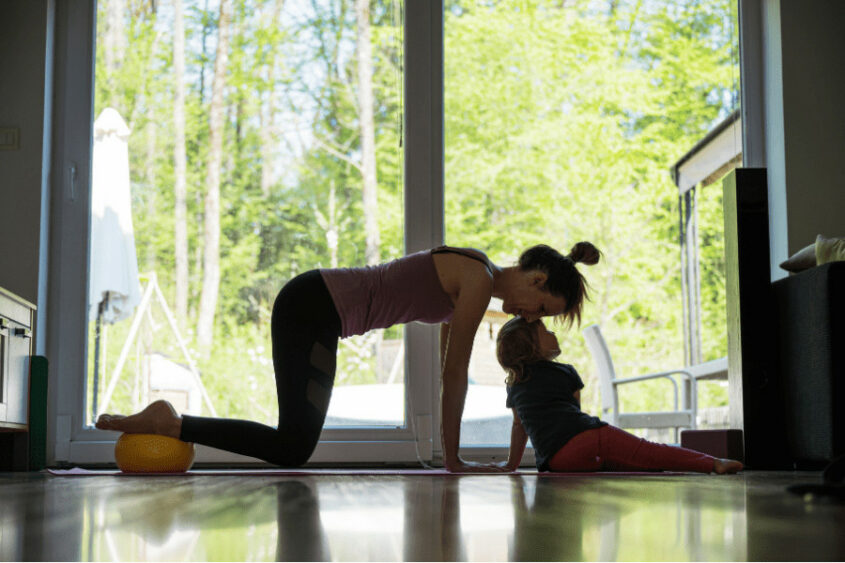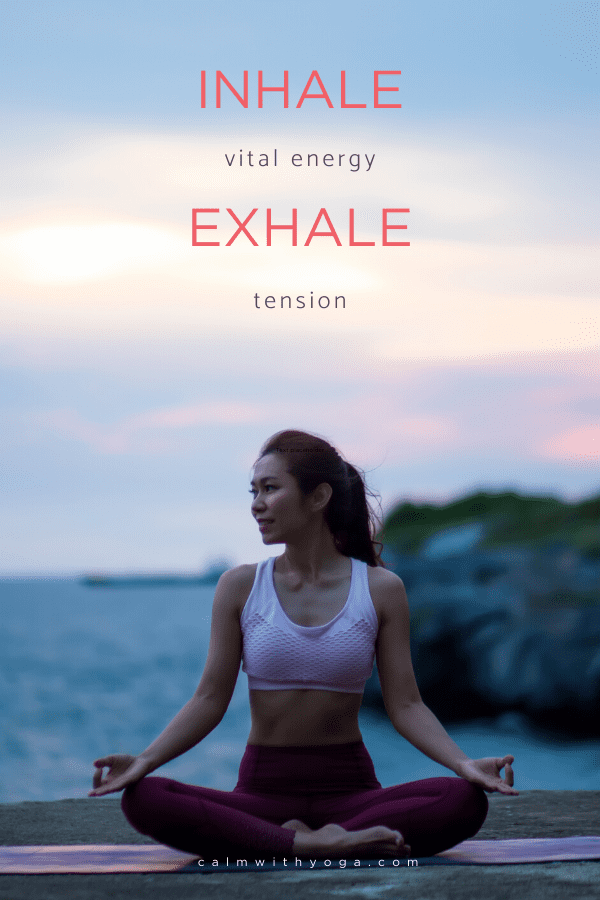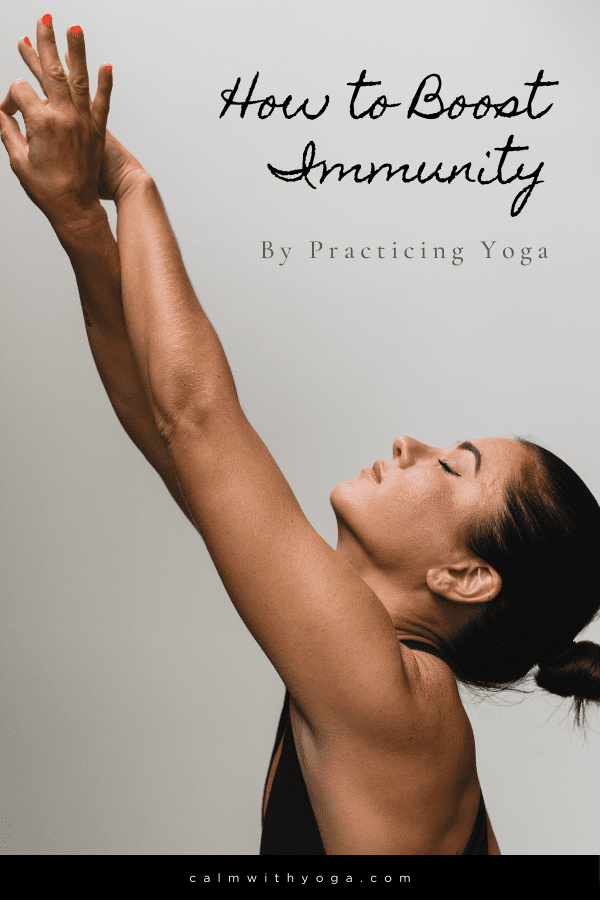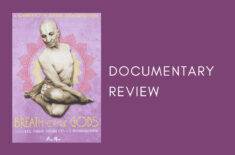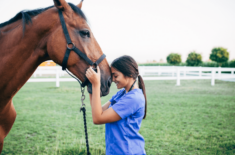As you begin to heal the inner you, you alter your immune system.
– Dr. Wayne Dyer, author & philosopher
Your immune cells are like little silent fighters that do so much behind the scenes and don’t get enough credit.
Everyday unbeknownst to you these cells fight various battles with outside threats and intruders in order to help keep you safe, functioning, and strong.
You need your immune system to be firing on all cylinders in order to feel good, think clearly, and perform at your best.
So it’s important that you also do your part to support this system so it too can function at its highest.
There are no days off for mom, so you better make sure you look after your health. 😉
If you’re constantly and chronically stressed out, anxious, sleep-deprived, malnourished, or dehydrated over time your immune function will weaken. (1)
A weakened or compromised immune system can lead to chronic infections, inflammation, autoimmune issues, and even cancer.
Luckily, you can boost immunity when you practice yoga!
Yoga poses (asanas) are known to help re-balance the body’s defenses, so the next time you feel run down or like a cold is coming on think about getting on your yoga mat.
The poses are only one way to practice yoga for boosted immunity.
Yogic breathwork (pranayama) also offers multiple health benefits.
Taking daily conscious, mindful deep breaths helps to balance the nervous system, reinforces the respiratory system, lowers blood pressure, reduces stress hormones, and can even help activate the lymphatic system, which plays a major role in immune function.
You can include your kids in your immune-boosting yoga practice and teach them how to do these poses too.
Here are some proven and effective specific ways to practice yoga for increased immunity and health…
5 immune-boosting yoga asanas:
Yoga poses in general help promote good blood flow, and the following ones have been known to even stimulate the thymus gland, which plays a vital role in immune function…
1- Bhujangasana (cobra pose)
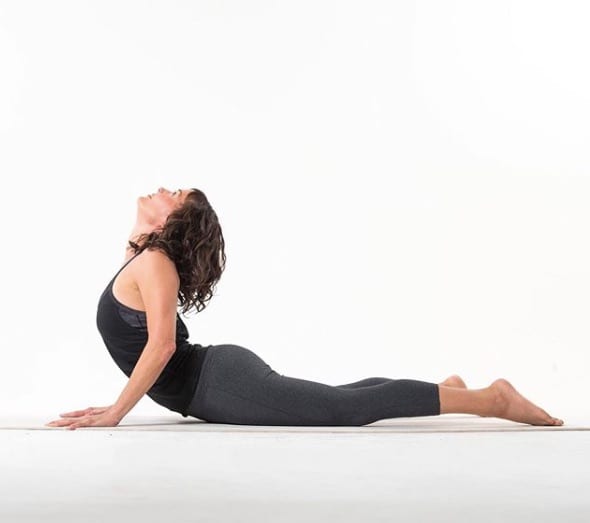
2- Matsyasana (fish pose)
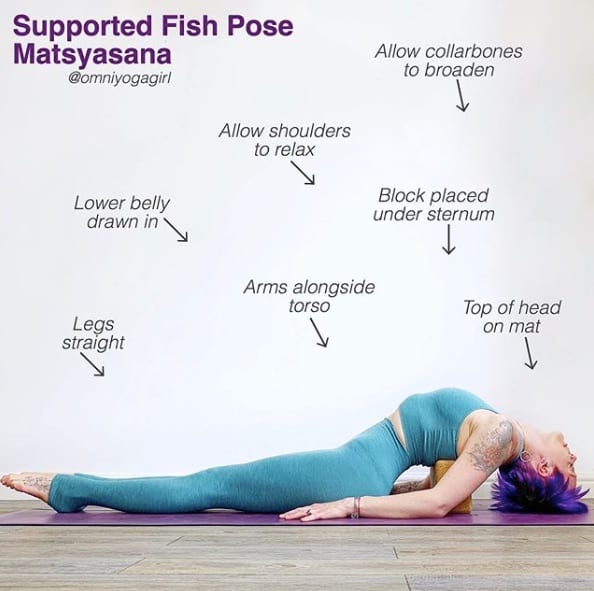
3- Adho mukha svanasana (downward dog)
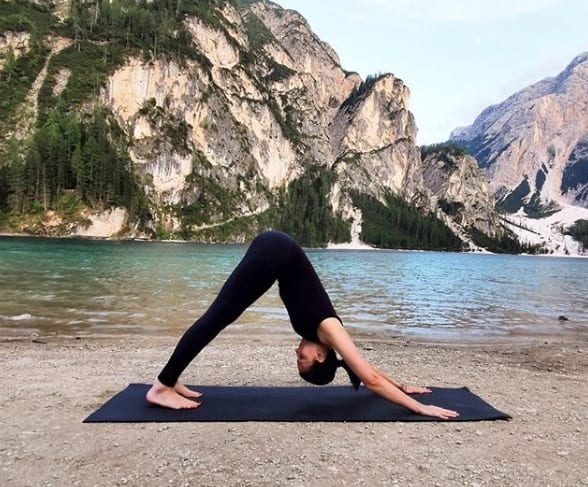
4 – Uttanasana (forward bend)

5- Dhanurasana (bow pose/ backbend)
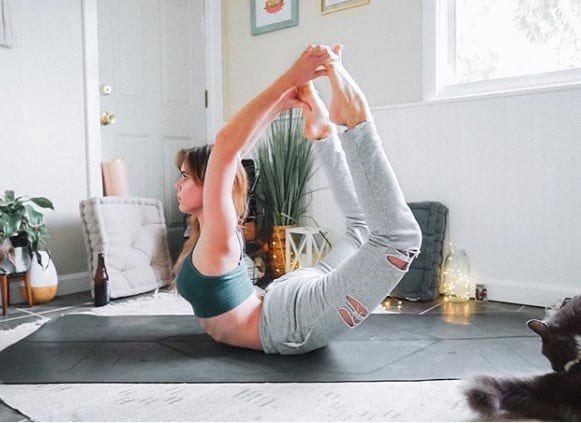
How belly breathing improves immune function:
When we breathe deeply and intentionally from our bellies (not our chests), we activate our diaphragm (the muscle underneath the heart and lungs that separates these from the abdominal cavity.)
That’s why belly breathing is often also referred to as diaphragmatic breathing.
We know we’re belly breathing when our lower belly expands outwardly when we inhale, and contracts inwardly when we exhale.
Belly breathing helps to strengthen the digestive system.
Since about 80% of your immune system is located in the folds of your digestive tract, this is really good news!
Engaging the diaphragm by breathing in this way causes it to massage the internal organs and glands, which in turn helps move lymph (fluid containing the immune system’s white blood cells) throughout the body to their targeted locations. (2)
A yogic breathwork-based study published in the Public Library of Science found that controlled deep belly breathing may also strengthen the body’s defenses by changing the gene expression of certain immune cells. (3)
The importance of breath-holding:
According to another study by the Norwegian University of Science & Technology (NTNU) holding your breath can not only change the genetic activity of white blood cells (immune cells), but it also appears to significantly increase white blood cells to help fight illness. (4)
NTNU drew blood samples from world-class free-divers at an international competition before and after the athletes completed a series of dives.
“The analysis results were striking: the activity of more than 5,000 genes changed in response to the simple effort of breath-holding.
This is almost ¼ of all genes found in human cells…
The most striking finding was a marked increase in the white blood cell type neutrophil granulocytes.
These blood cells are programmed for rapid response when the body perceives attacks from intruders; the neutrophils are capable of killing invading cells simply by eating them,” explains Ingrid Eftedal, NTNU research scientist.
Given all of this, it appears that the best immune-boosting breathing combo is deep belly breathing paired with timed breath retention.
The immunity-boosting power of pranayama (yogic breathwork):
Yogis have long known that the practice of voluntary breath control (consisting of intentional inhalations, retention, and exhalations) helps strengthen and purify the body so we can feel better and more energized.
In his book, The Breath of Life: Integral Yoga Pranayama, Swami Satchidananda explains it like this:
During pranayama, you are literally drinking in gallons and gallons of vitality and immunity.
You supercharge the blood with extra oxygen.
When you retain the breath, you literally inject more oxygen into the bloodstream.
Oxygen is life, so that means you are enriching your blood with a lot of life.
And not only do you take in more oxygen but along with the air you take in more prana.
Every cell of your body vibrates with new life.
As mentioned, one of the side effects of chronic stress and overwhelm is that optimal immune function becomes compromised and suppressed.
Yogic breathing calms the stress-response and has been shown to enhance immune function. (5)
A study carried out on 60 first-year medical school students found that regular yoga practice helps create an immunity buffer when stress heightens.
The study broke participants into two groups.
Group A received yogic training for 35 minutes daily while Group B did not receive any stress management training at all. (6)
Both groups showed weakened immunity due to examination stress, but Group B (the control group) displayed significantly lower immunity levels than Group A (the yoga group).
A science-based yogic breathing exercise:
Given the effects of deep belly breathing paired with breath retention, here’s a proven and easy exercise you can practice to boost your defenses anytime.
Though you’ll definitely want to practice this exercise in the winter or when you start feeling run down, it’s even more effective if you practice just a few minutes regularly and consistently.
This is especially true if you’re dealing with a chronic immune response and/or inflammation.
Bonus points for doing it daily!
HOW TO:
- Sit comfortably either on a chair or on the floor.
- Straighten your back and neck so you are completely upright.
- Relax your face, jaw, and tongue.
- Inhale for 5 counts (belly extends outwardly, keep your chest and upper body still.)
- Hold your breath for 10 counts.
- Exhale for 7 counts (belly contracts inwardly, keep your chest and upper body still.)
- Hold for 5.
- Repeat this inhale – hold – exhale – hold pattern for 7 rounds. (Just a little over 3 minutes.)
Note: Practice at a rate that is comfortable for you. You should not be straining or pushing in any way. If any part of this exercise feels too much for you, lower the counts and adjust accordingly. Consult with your doctor or health care practitioner before starting a pranayama practice from scratch, especially if you’re experiencing chronic health issues.
REFERENCES
:
(1)https://www.newscientist.com/article/dn4116-brain-study-links-negative-emotions-and-lowered-immunity/
(2)https://www.amazon.com/Healer-Within-Traditional-Techniques-Meditation/dp/0062514776
(3)http://journals.plos.org/plosone/article?id=10.1371/journal.pone.0062817
(4)https://blog.medisin.ntnu.no/what-the-immune-system-is-up-to-while-youre-holding-your-breath/
(5)https://www.ncbi.nlm.nih.gov/pubmed/16624497
(6)https://www.ncbi.nlm.nih.gov/pmc/articles/PMC3482773/?report=printable


